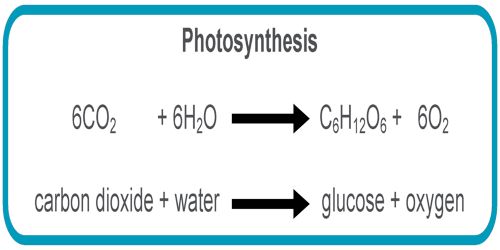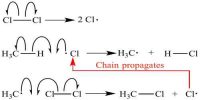Photosynthesis
Some very important reactions take place in nature by the action of light. One such reaction is the synthesis of macromolecules in the plant kingdom and is known as photosynthesis. It is a metabolic process in plants and certain bacteria, using light energy absorbed by chlorophyll and other photosynthetic pigments for the reduction of CO2, followed by the formation of organic compounds. The formation of carbohydrates by plants in presence of light from CO2 and H2O with the help of chlorophyll as sensitizer is an example of natural photosynthesis. The detailed mechanism has so far been elusive. Several man-made high polymers are now synthesized by photochemical processes and photochemistry is now an important branch for kinetic studies.
There are two types of photosynthetic processes: oxygenic photosynthesis and anoxygenic photosynthesis. Oxygenic photosynthesis is the most common and is seen in plants, algae and cyanobacteria.
Oxygenic photosynthesis is written as follows:
6CO2 + 12H2O + Light Energy → C6H12O6 + 6O2 + 6H2O

Here, six molecules of carbon dioxide (CO2) combine with 12 molecules of water (H2O) using light energy. The end consequence is the structure of a single carbohydrate molecule (C6H12O6, or glucose) along with six molecules each of breathable oxygen and water.
















